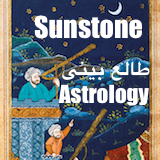The New Yorker:
True rhymes are marvels; a slant rhyme’s a sin. Or is it vice versa? Let the battle begin.
By Adam Gopnik
Rhyme thrives at both poles of literature. It is the material of a greeting card—“Roses are red / Violets are blue / Sugar is sweet / And so are you”—and the high-tragic language of Racine. Rhyme turns language into ritual, and rituals tend to be either levelling and egalitarian, bringing different kinds together to be brethren, as in churches, or exclusive and exalting, advancing a narrow set to elect status, as in clubs. Rhyme does both. In Shakespeare, it can offer the primitive force of incantation, as when the witches ask, “When shall we three meet again / In thunder, lightning, or in rain?” And it can also offer the lulling reassurance of stylized speech, as when Juliet tells Romeo, “Good night, good night. Parting is such sweet sorrow / That I shall say good night till it be morrow.”
Daniel Levin Becker’s new book, “What’s Good” (City Lights), argues that American hip-hop, wrongly praised and put down as an “authentic” form of expression, a “street” idiom, is both levelling and exalting; it has renewed the language of American song by broadening its resources and sharpening its ear. Rap, he tells us, “serves, consistently, contagiously, sometimes in spite of its own claims to the contrary, as a delivery mechanism for the most exhilarating and crafty and inspiring use of language in contemporary American culture.” His interests are less political than aesthetic. He disapproves of those who would insist on “instrumentalizing rap as a vector of sociopolitical insight without also revelling and rejoicing in its vital sense of play.”
Go to link










Comments